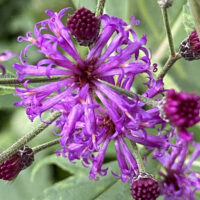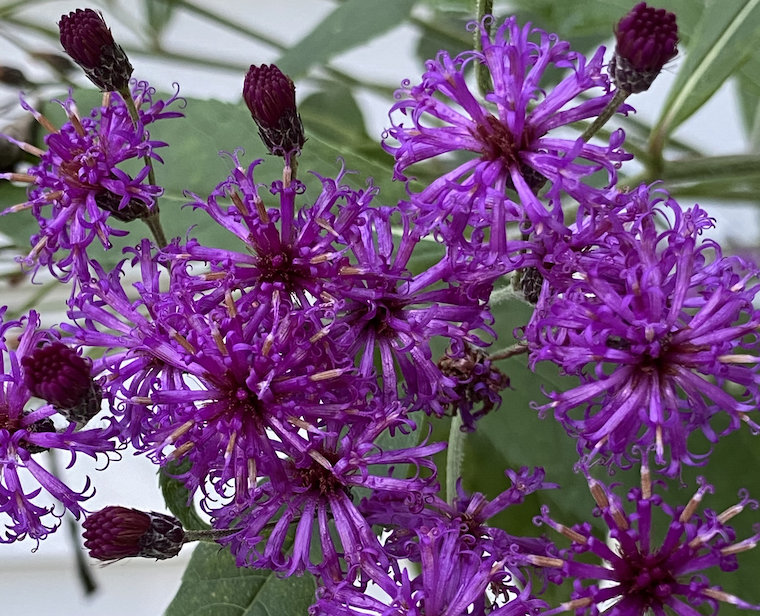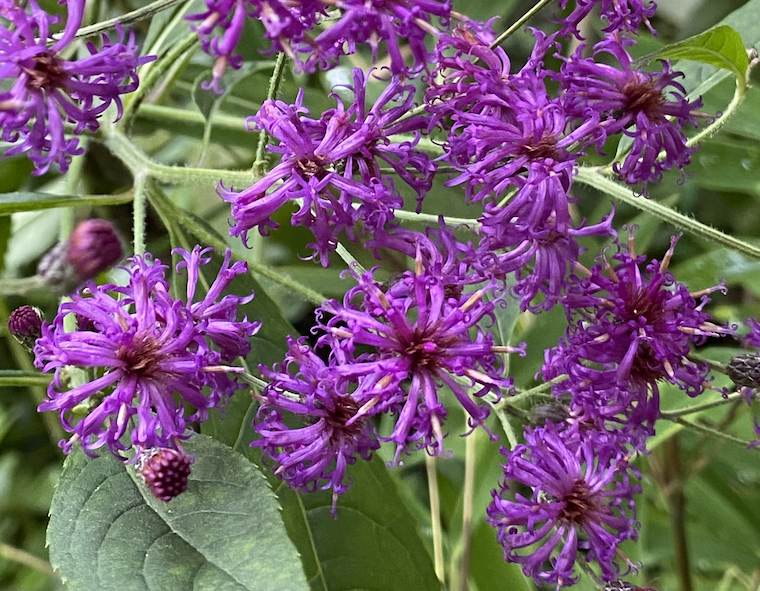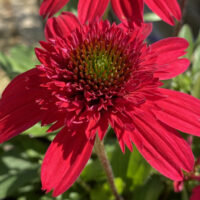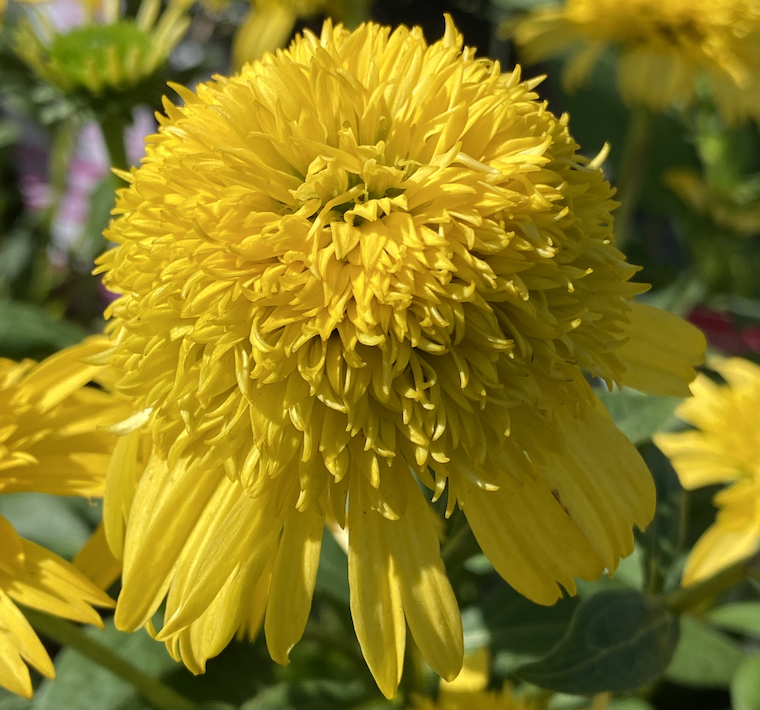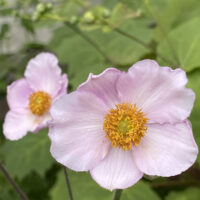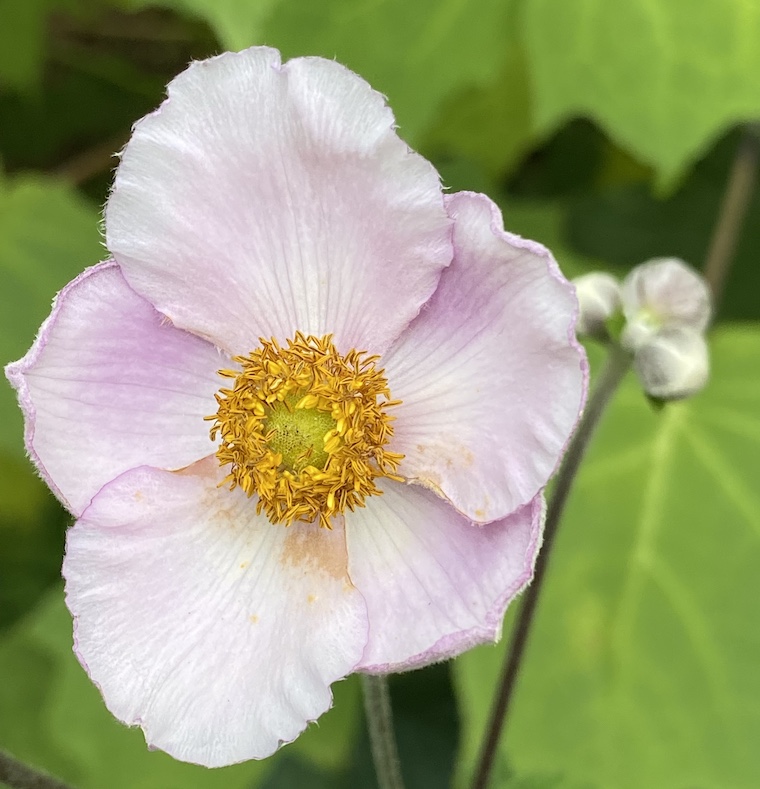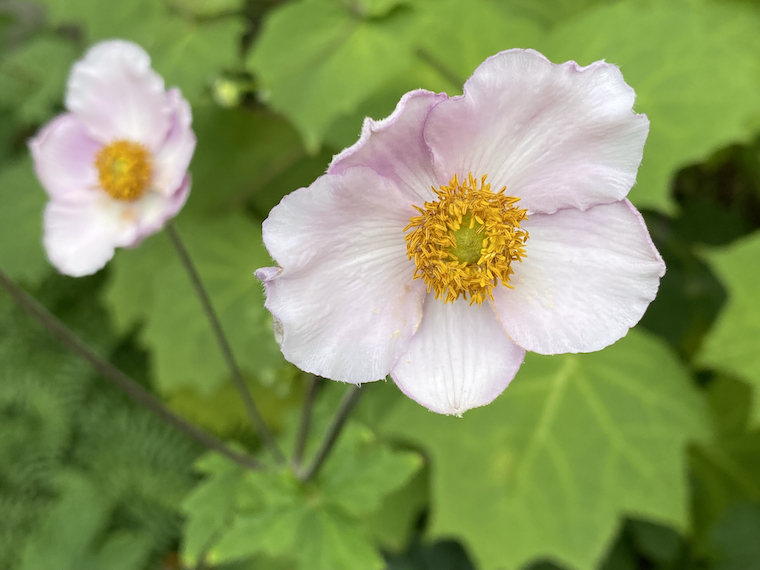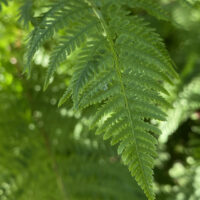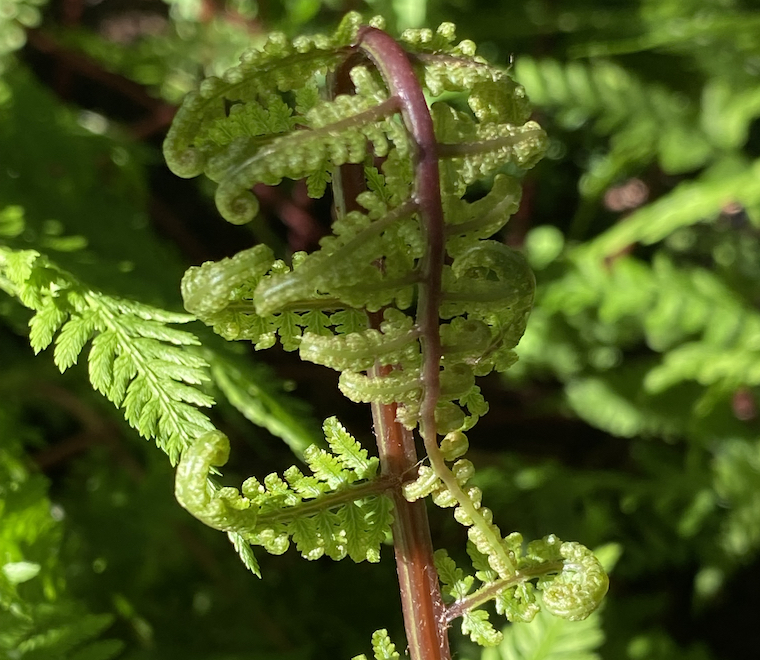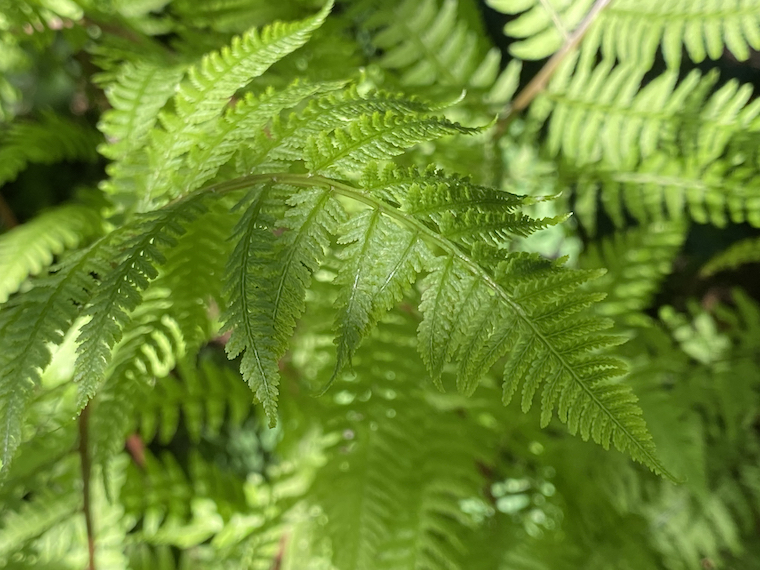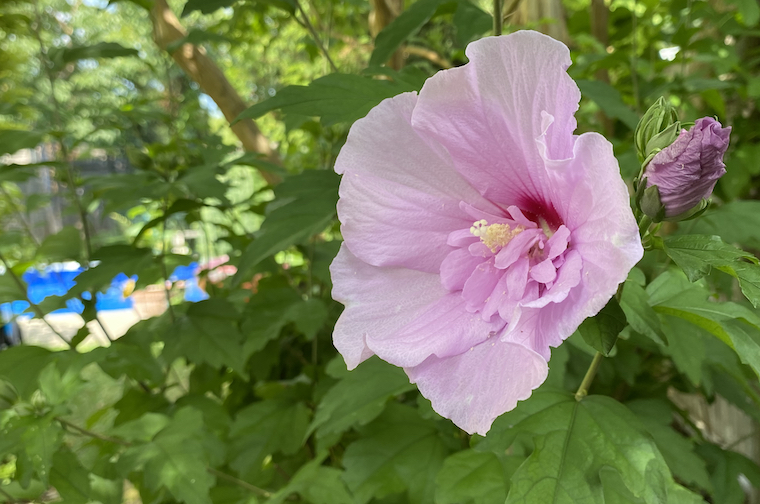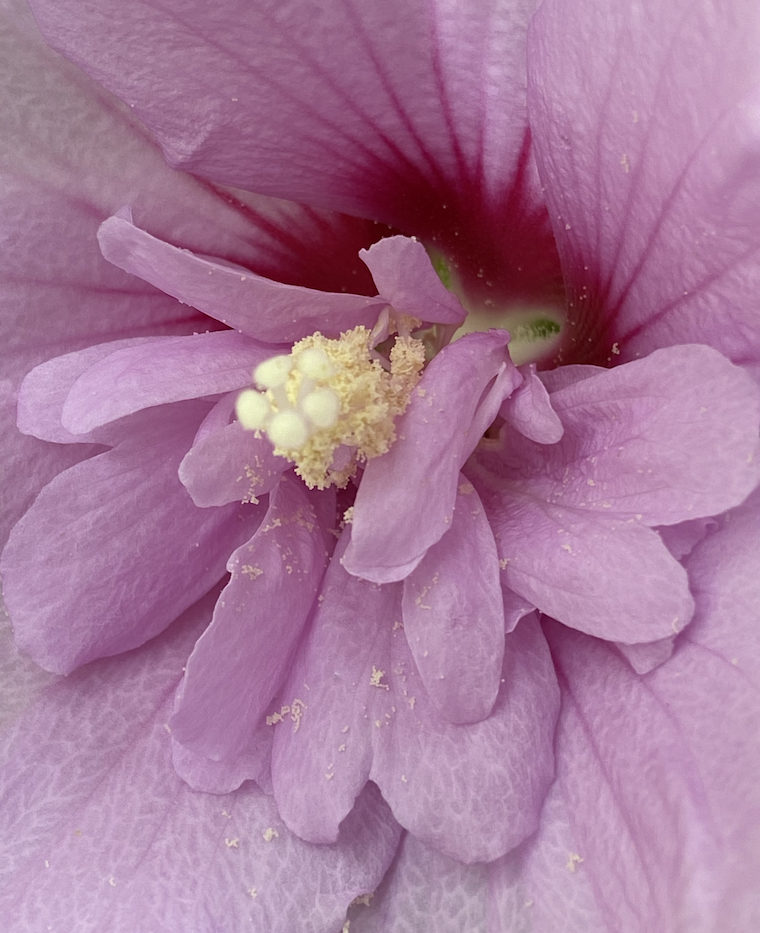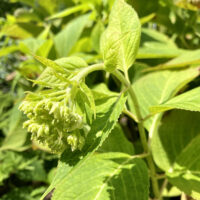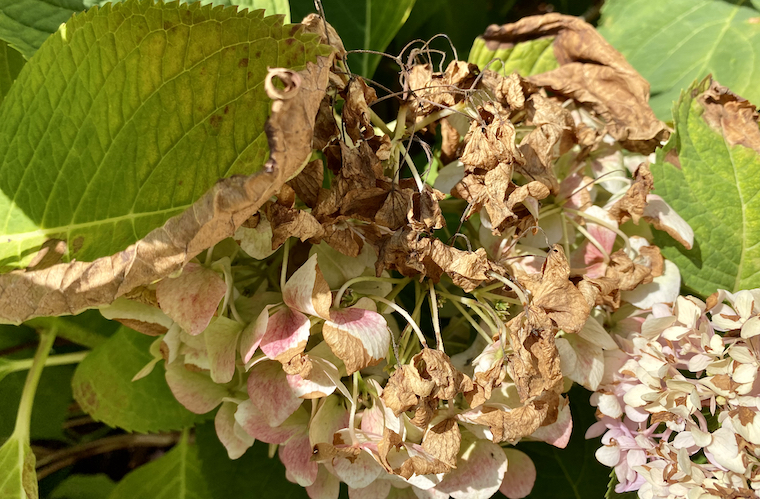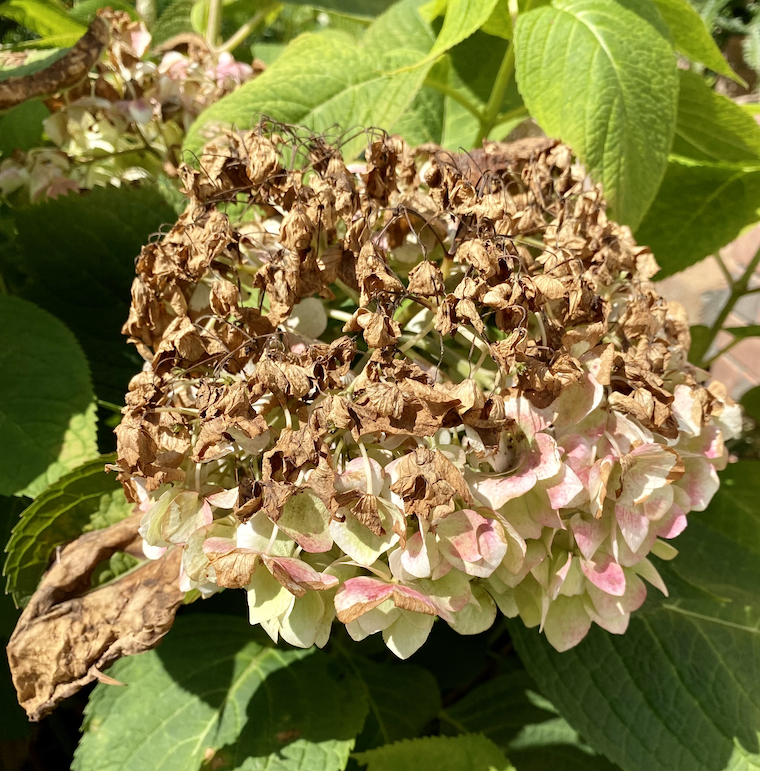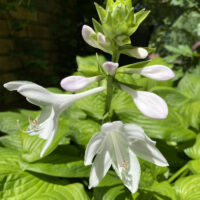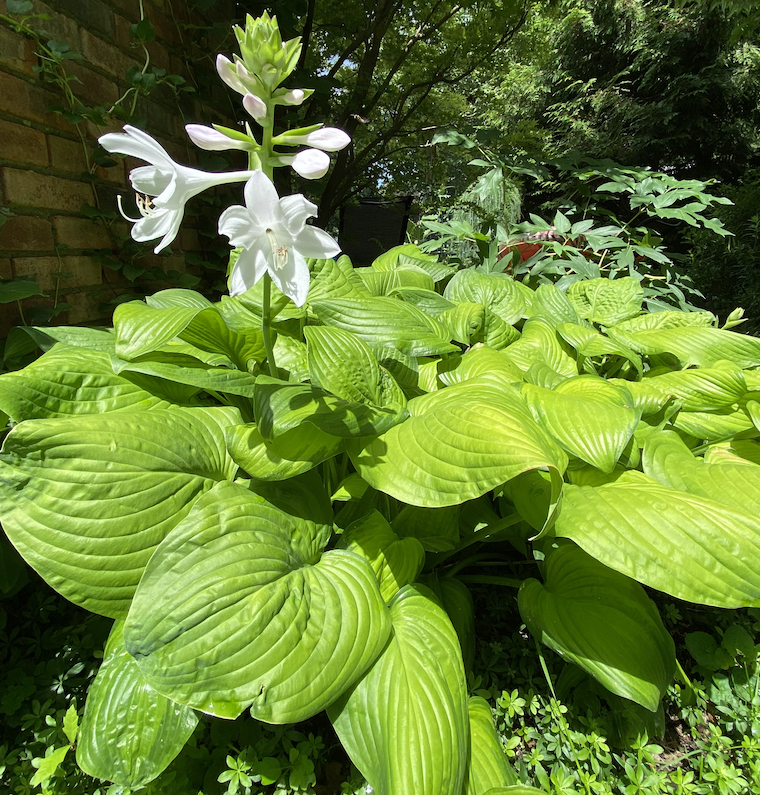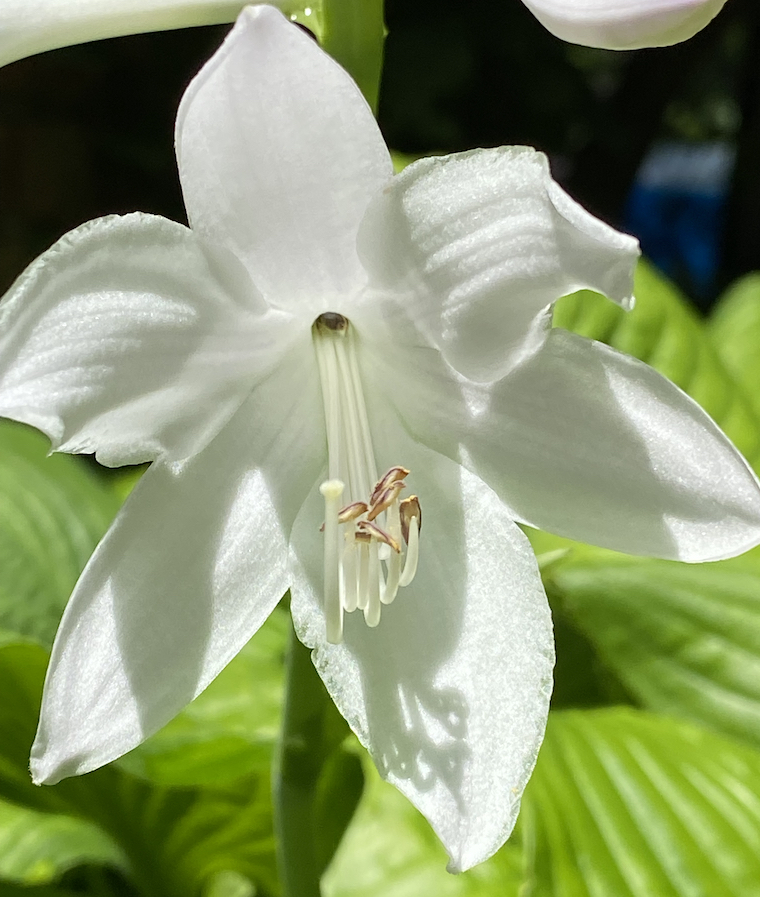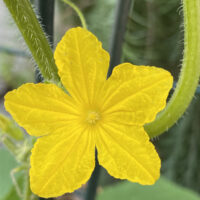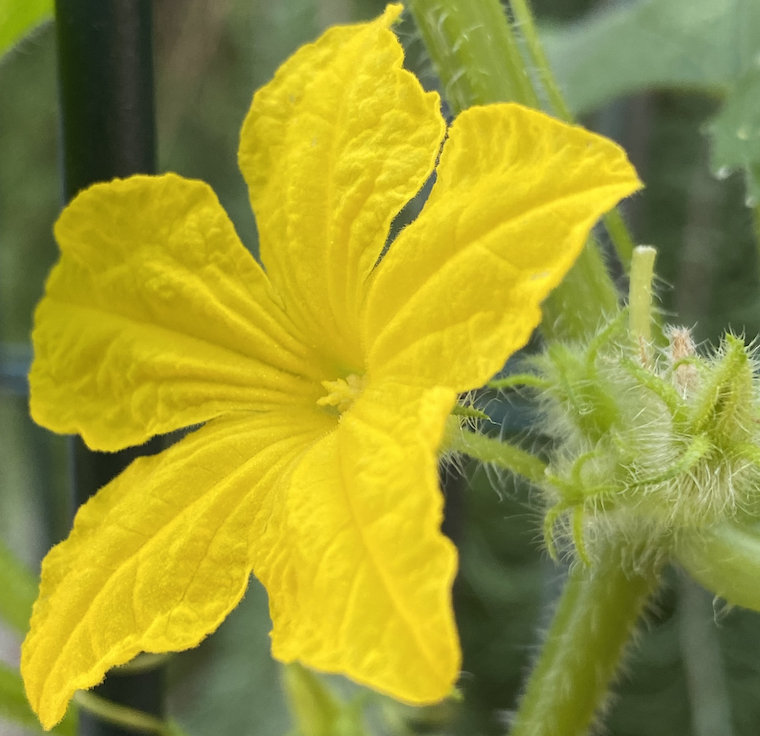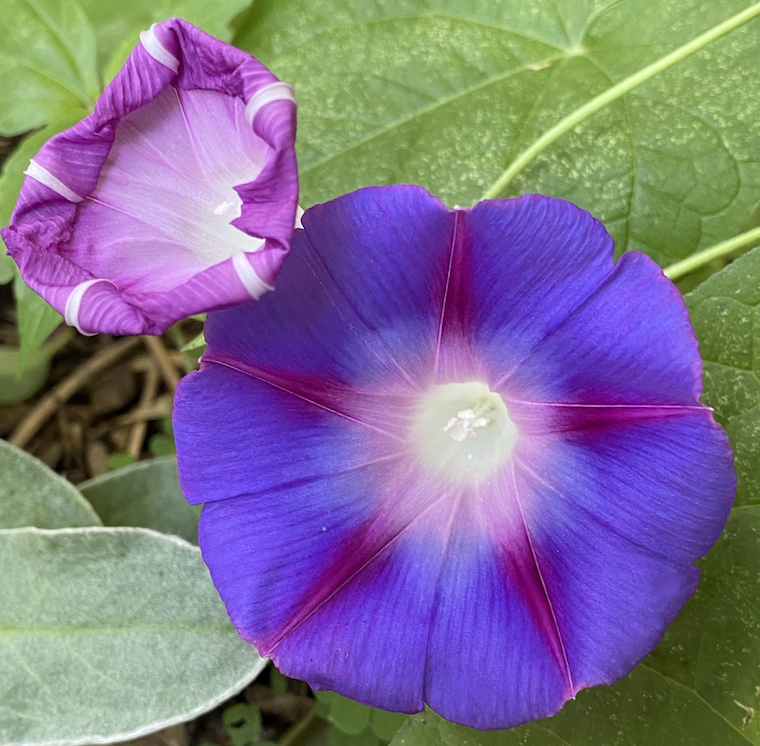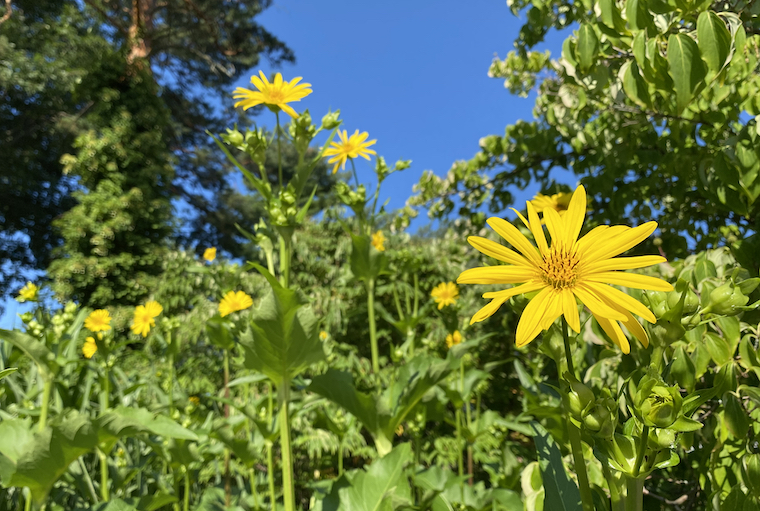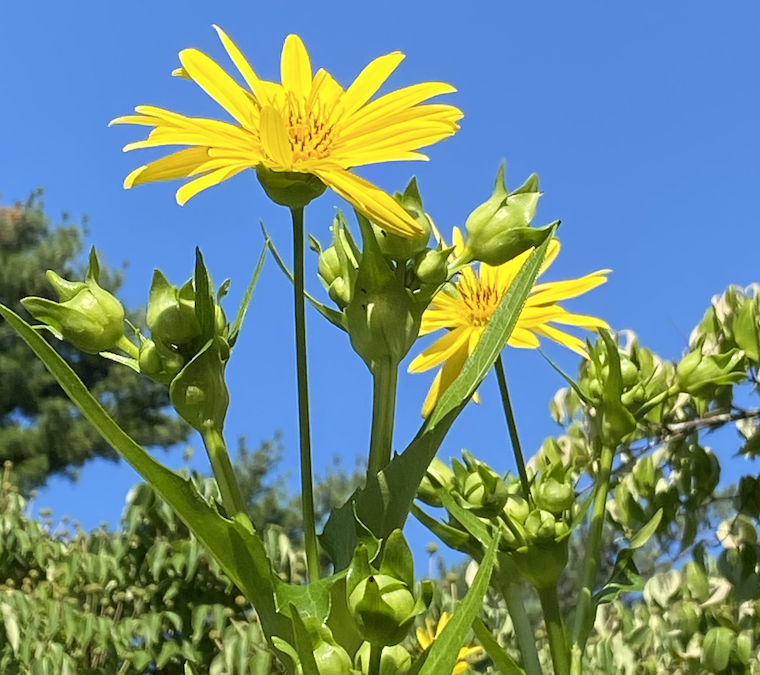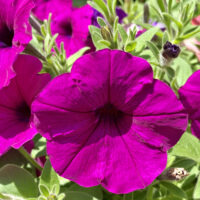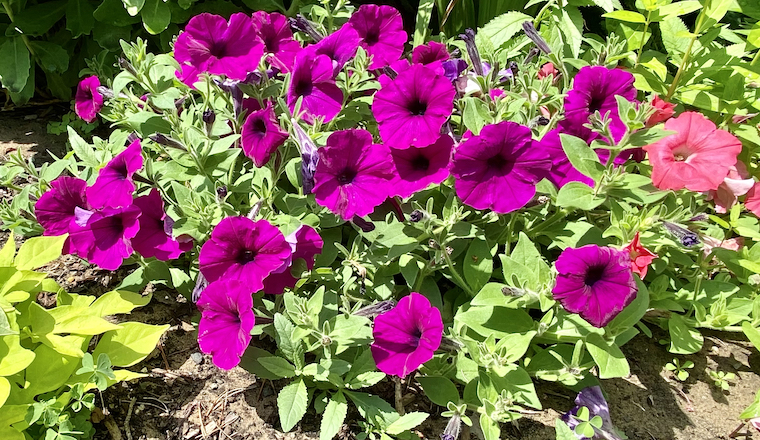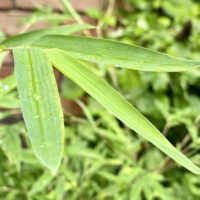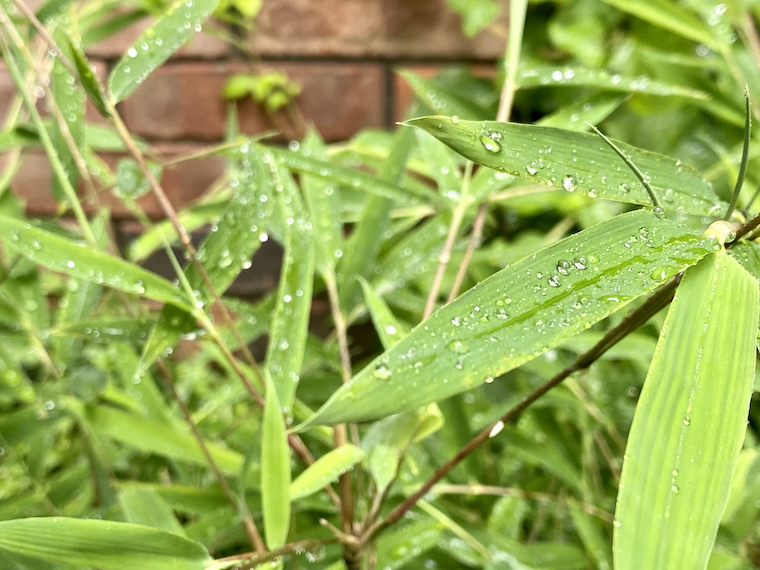Ironweed is a native plant that purportedly gets its name for its strong stems of ‘iron’. This year that proves to be a misnomer, as our single specimen has about four stalks that are currently on the ground, having bent and folded beneath the heat, the rain, and their own height. Iron, my ass. Last year I recall a similar circumstance, at which time I staked them to keep the upright for their blooming season. This year I was too lazy and decided to see how they would fare on their own. Alas, they have fallen, just as their bloom season has started.
Their strongest attribute is this glorious color – their form is rough and rugged and better-suited to a wild garden or field, neither of which we have at our disposable. For now, it will stay where it’s planted, but eventually it may be excised from the garden.
Gardening remains a cut-throat endeavor, not for the faint of heart.
I do love the color though…

